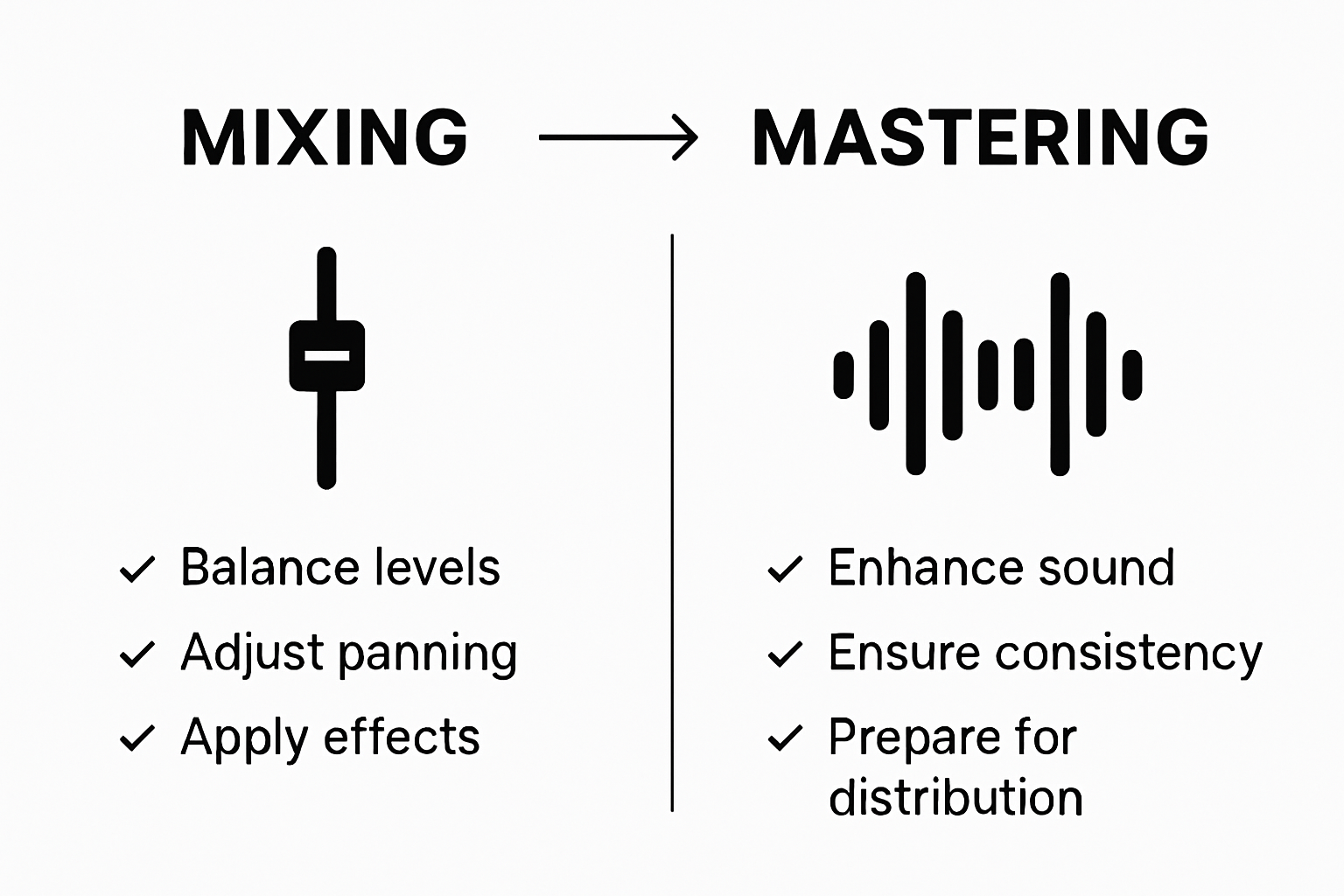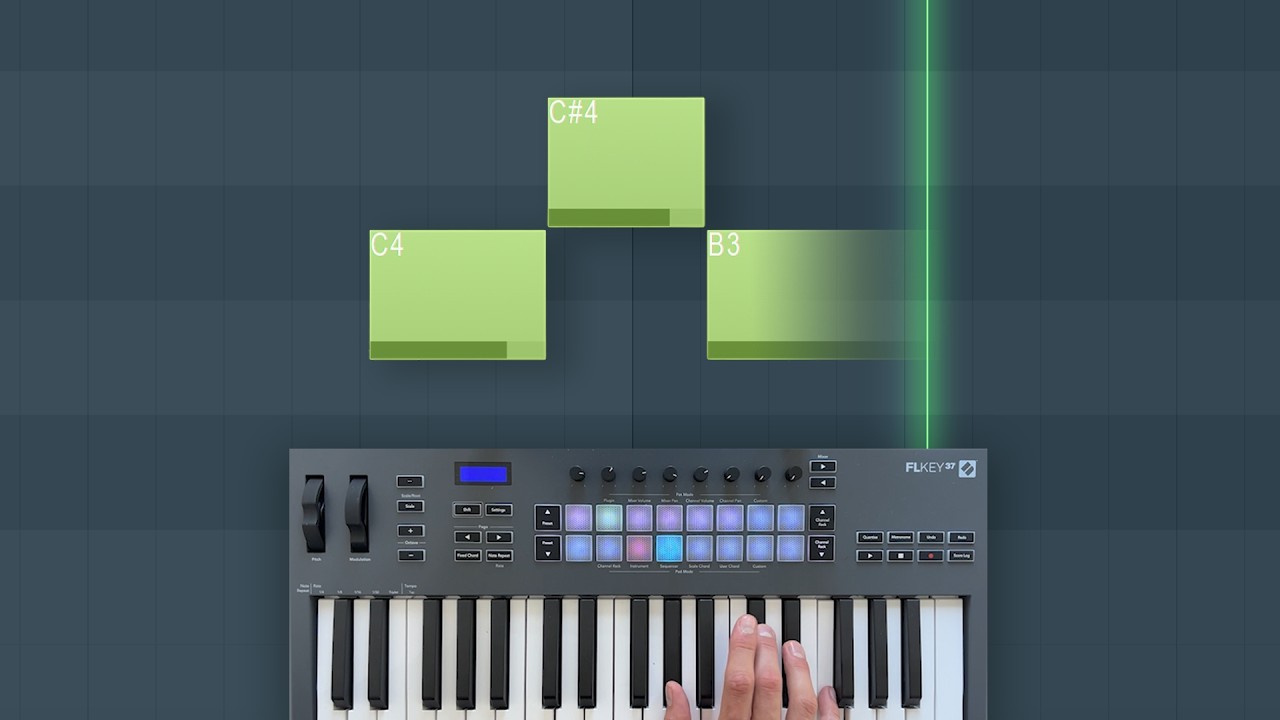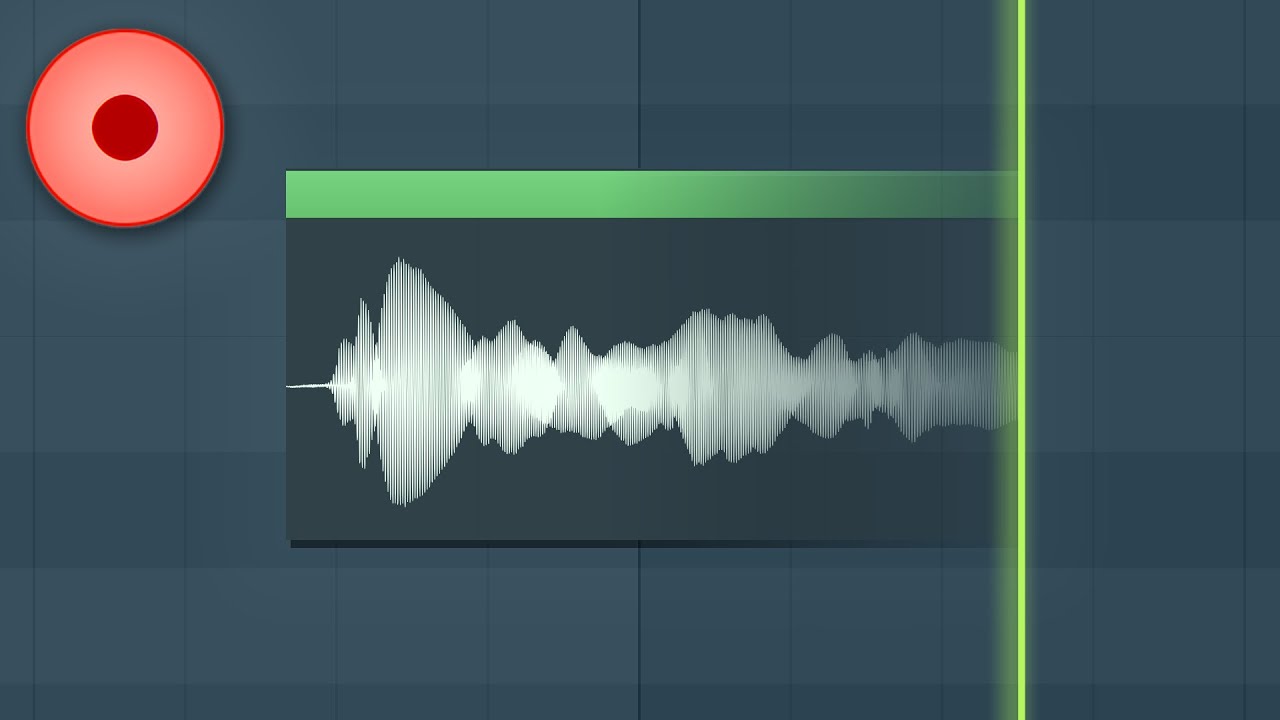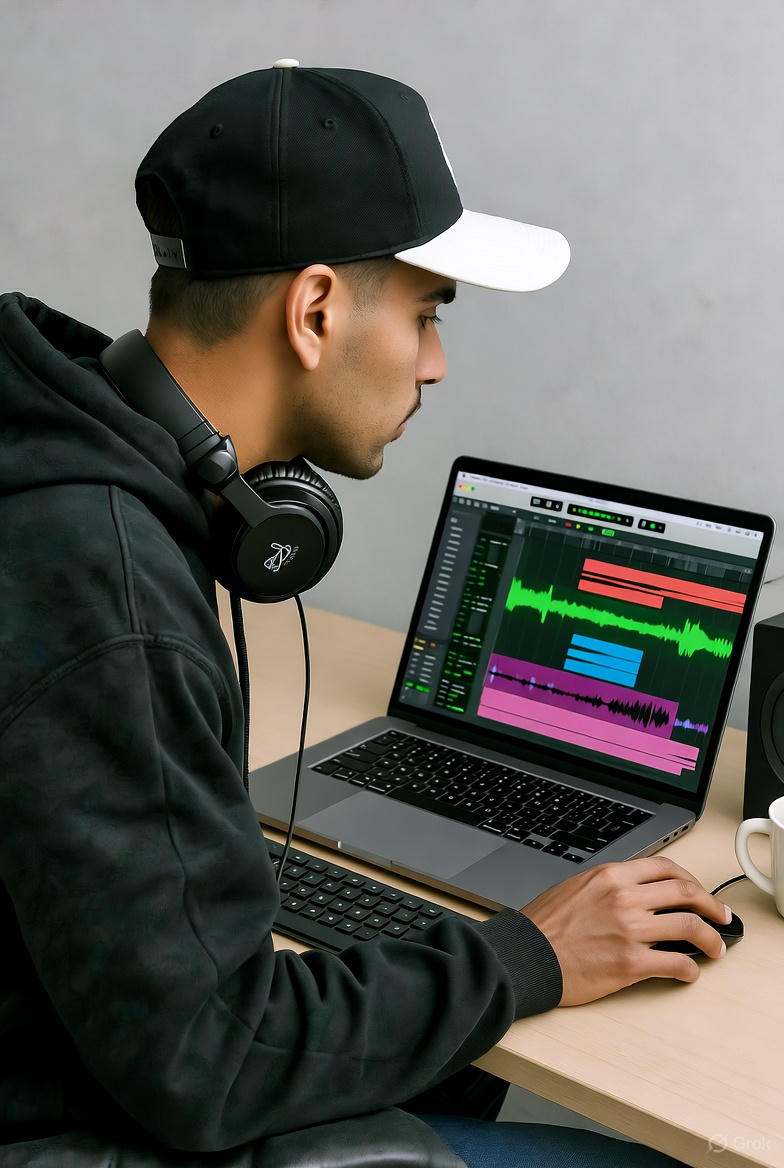!Let Us HELP YOU!
We have a lot of curated content on this blog.
Take this simple 20 second Quiz to Help You
Find The Exact Content You Are Looking For!
Music production is packed with technical terms and hidden jargon that can intimidate even the most passionate beginner. Yet over 90 percent of home producers say understanding key terminology directly improves their music quality. Most people assume making great music demands only creativity or expensive gear. The surprise is that a solid grip on music production terminology might be your biggest shortcut to pro-level sound.
Table of Contents
- Key Concepts In Music Production Terminology
- The Importance Of Music Production Terminology In Creating Music
- Understanding The Workflow Of Music Production
- Essential Tools And Techniques In Music Production
- Real-World Applications Of Music Production Terminology
Quick Summary
| Takeaway | Explanation |
| Master key sound elements: frequency and amplitude | Understanding pitch and volume are crucial in shaping sound characteristics effectively. |
| Utilize EQ and compression techniques | Equalization balances frequency ranges, while compression stabilizes dynamic range for polished audio. |
| Familiarize with DAWs for recording | Digital Audio Workstations are essential tools for recording, editing, and mixing music efficiently. |
| Communicate using precise terminology | Using specific vocabulary helps convey technical sound adjustments, enhancing collaboration among producers and musicians. |
| Engage in pre-production planning | Structuring musical concepts early helps define genre, instrumentation, and emotional tone for better project outcomes. |
Key Concepts in Music Production Terminology
Understanding music production terminology is crucial for navigating the complex world of sound creation and recording. Whether you are a beginner or an experienced producer, mastering these core concepts will help you communicate effectively and improve your musical craft.
Fundamental Sound Production Elements
At the heart of music production are several key elements that form the foundation of audio creation. Signal flow represents how sound travels through various equipment and processing stages. This concept determines how audio moves from an instrument or microphone through mixers, effects, and recording systems.
Sound frequency and amplitude are critical components in understanding audio characteristics. Frequency determines the pitch of a sound – how high or low it sounds – while amplitude relates to the volume or intensity of the audio signal. Producers manipulate these elements to shape the sonic landscape of their recordings.

Technical Processing and Sound Manipulation
Modern music production involves complex techniques for transforming raw audio. Equalization (EQ) allows producers to boost or cut specific frequency ranges, helping balance and refine sounds. For instance, reducing low-end frequencies can clean up a muddy bass track, while enhancing mid-range frequencies can make vocals more prominent.
Sound compression is another essential technique that controls the dynamic range of audio.
By reducing the difference between loud and soft parts of a recording, compression helps create more consistent and polished sounds. Learn more about music production techniques in our comprehensive guide.
Recording and Digital Audio Concepts
Digital audio workstations (DAWs) have revolutionized music production by providing powerful tools for recording, editing, and mixing. Sampling involves capturing a segment of sound to reuse in new compositions, while multitracking enables recording multiple sound sources separately and combining them later.
Understanding these key concepts in music production terminology provides a solid foundation for anyone looking to create professional-quality audio.
To provide a clear and scannable overview of essential music production terms covered in this section, the following table outlines key concepts and their definitions.
| Term | Definition |
| Signal Flow | The path that audio takes through different equipment and processing stages. |
| Frequency | The property of sound that determines pitch (how high or low a sound is). |
| Amplitude | The volume or intensity of an audio signal. |
| Equalization (EQ) | The process of adjusting specific frequency ranges to balance or refine a sound. |
| Compression | The technique of controlling the dynamic range by reducing differences between loud and soft sounds. |
| Sampling | Capturing a segment of audio for use in new musical compositions. |
| Multitracking | Recording multiple sound sources separately and mixing them together in a project. |
The Importance of Music Production Terminology in Creating Music
In the intricate world of music production, terminology serves as the universal language that connects artists, engineers, and producers. Understanding and effectively using this specialized vocabulary is not just about communication – it is a critical skill that enables precise musical expression and collaboration.
Professional Communication and Collaboration
Music production terminology acts as a critical bridge between creative vision and technical execution. When producers speak a common language, they can communicate complex sonic ideas with remarkable precision. Technical vocabulary allows musicians to describe nuanced sound characteristics, mix settings, and production techniques that would be challenging to explain through general language.
For example, instead of saying a track sounds “weird,” a professional might specify that the mix lacks “stereo width” or has “excessive mid-range frequency buildup.” This specificity helps team members understand exactly what needs adjustment.
Learning and Skill Development
Mastering music production terminology is fundamental to skill progression. Comprehensive understanding of technical terms accelerates learning by providing a structured framework for comprehending complex production concepts. Producers who invest time in learning industry-specific language can more quickly absorb advanced techniques and integrate new production strategies.
WEBSITE RESOURCES FOR MUSICIANS
Key benefits of developing strong terminology skills include:
- Faster comprehension of tutorial and educational content
- Enhanced ability to troubleshoot technical audio issues
- More effective communication with fellow musicians and sound engineers
Creative Problem Solving and Innovation
Precise terminology enables more sophisticated creative problem solving. When producers can articulate specific sonic challenges, they can more effectively experiment with solutions. Explore advanced music production techniques in our comprehensive guide.
According to research on professional music production, standardized terminology reduces miscommunication and promotes collaborative innovation. By developing a robust technical vocabulary, producers transform abstract musical ideas into tangible, shareable concepts that can be refined and realized.
Ultimately, music production terminology is more than just technical jargon – it is the fundamental language through which musical creativity is translated into professional, high-quality sound.
Understanding the Workflow of Music Production
Music production is a complex, multifaceted process that transforms raw musical ideas into polished, professional recordings. Understanding the workflow helps producers navigate the intricate journey from initial concept to final master, ensuring a systematic and creative approach to sound creation.
Pre-Production and Conceptualization
The workflow begins with pre-production, a critical phase where musical concepts are first developed and structured. During this stage, producers brainstorm ideas, create initial sketches, and establish the foundational elements of their project. This might involve composing melodies, developing rhythmic structures, or determining the overall sonic aesthetic.
Key considerations during pre-production include:
- Defining the musical genre and style
- Selecting primary instruments and sound sources
- Establishing the emotional tone and musical narrative
- Creating initial arrangement sketches
Recording and Sound Capturing
Recording represents the stage where musical ideas are transformed into actual audio tracks. Producers carefully select microphones, set up recording environments, and capture performances with precision. Learn advanced recording techniques in our comprehensive DAW guide.
According to research on professional music production workflows, this phase involves multiple technical and creative decisions. Producers must balance technical accuracy with capturing the emotional essence of a performance.
Post-Production and Finalization
Post-production is where raw recordings are transformed into a cohesive, professional sound. Mixing involves balancing individual tracks, applying effects, and creating spatial depth. Mastering represents the final stage, where the entire project is refined to ensure consistent sound quality across different playback systems.

The post-production workflow typically includes:
- Detailed audio editing
- Applying equalization and compression
- Creating stereo width and depth
- Ensuring overall sonic consistency
Understanding this workflow allows producers to approach music creation systematically while maintaining creative flexibility. Each stage requires specific skills, technical knowledge, and artistic intuition, making music production a complex and rewarding artistic process.
This table summarizes the major stages in the music production workflow, highlighting the primary focus and typical activities for each stage discussed in the article.
| Stage | Primary Focus | Typical Activities |
| Pre-Production | Concept Development | Brainstorming, sketching ideas, choosing genre, defining emotional tone |
| Recording | Sound Capturing | Selecting microphones, setting up environment, tracking performances |
| Post-Production | Polishing and Finalizing | Editing, mixing, applying effects, mastering for consistency |
Essential Tools and Techniques in Music Production
Music production requires a sophisticated blend of creative vision and technical expertise. Modern producers leverage an array of advanced tools and techniques to transform musical ideas into professional, high-quality recordings that captivate listeners.
Digital Audio Workstations and Software
Digital Audio Workstations (DAWs) form the central hub of contemporary music production. These sophisticated software platforms provide comprehensive environments for recording, editing, mixing, and mastering audio. Each DAW offers unique features and workflows, allowing producers to craft their sound with precision and creativity.
Key considerations when selecting a DAW include:
- Compatibility with existing hardware
- Workflow intuitiveness
- Available plugins and virtual instruments
- Processing power and system requirements
Audio Recording and Processing Equipment
Beyond software, physical tools play a crucial role in capturing and manipulating sound. Microphones, audio interfaces, and studio monitors are fundamental components that directly impact recording quality. Explore our comprehensive guide to essential audio equipment.
Professional audio interfaces convert analog signals into digital data, ensuring high-fidelity sound capture. Specialized microphones designed for different instruments and vocal styles enable producers to capture nuanced performances with exceptional clarity.
Sound Manipulation and Effect Techniques
Producers employ sophisticated sound manipulation techniques to craft unique sonic landscapes. Effects like reverb, delay, compression, and equalization transform raw recordings into polished, professional tracks.
According to research on music production technologies, these techniques serve multiple creative purposes:
- Creating spatial depth and dimensionality
- Balancing frequency ranges
- Controlling dynamic range
- Adding artistic texture and character
Understanding and mastering these essential tools and techniques empowers producers to translate creative vision into compelling musical experiences. The intersection of technical skill and artistic intuition defines modern music production.
Reviewing the essential tools and techniques in modern music production, this table details the main categories and describes their purpose as outlined in the text.
| Tool/Technique | Description |
| Digital Audio Workstation (DAW) | Core software for recording, editing, mixing, and mastering audio |
| Microphones | Devices for capturing sound sources such as vocals and instruments |
| Audio Interface | Hardware that converts analog audio signals to digital format for use in computers |
| Studio Monitors | Speakers designed for accurate audio playback and critical listening during production |
| Equalization (EQ) | Adjusts frequency ranges to refine the tonal balance of individual sounds or overall mixes |
| Compression | Controls audio dynamics, balancing volume between loud and soft passages |
| Effects (Reverb, Delay, etc.) | Audio processing techniques applied to create space, depth, and artistic character in the mix |
Real-World Applications of Music Production Terminology
Music production terminology transcends academic knowledge, serving as a practical toolkit for creative professionals across diverse musical environments. Understanding these terms transforms abstract concepts into actionable strategies for sound design and musical composition.
Professional Studio Collaboration
Professional communication relies heavily on precise technical language. In collaborative studio settings, producers, sound engineers, and musicians must quickly and accurately convey complex sonic ideas. Terminology becomes the universal language that bridges creative vision with technical execution.
For instance, when a producer says “we need more punch in the low end” or “reduce the muddy frequencies,” everyone understands the specific sonic adjustments required. This shared vocabulary eliminates ambiguity and accelerates the creative process.
Key communication scenarios include:
- Describing specific sound characteristics
- Requesting technical adjustments
- Explaining creative intent through technical language
- Providing precise mixing and mastering instructions
Genre-Specific Sound Design
Different musical genres demand unique sonic approaches, and specialized terminology helps producers achieve authentic sound signatures. Electronic dance music might require discussions about sidechaining and frequency modulation, while hip hop production involves specific discussions about sampling and drum programming.
Explore advanced production techniques for different musical styles.
Technical Problem Solving
Accurate terminology enables rapid technical troubleshooting. When audio issues arise, producers can precisely diagnose and resolve problems by articulating specific technical challenges.
According to research on professional music production workflows, effective communication reduces production time and minimizes misunderstandings.
Critical problem-solving aspects include:
- Identifying signal chain disruptions
- Diagnosing equipment malfunction
- Explaining acoustic environment limitations
- Recommending specific technical interventions
Ultimately, music production terminology is more than academic knowledge – it is a practical communication system that transforms creative ideas into professional, high-quality sound.
Ready to Master Music Production Language and Make Beats Like a Pro?
Struggling to cut through music production confusion? If phrases like signal flow, compression, or multitracking from this article seem overwhelming, you’re not alone. Many producers get stuck because they miss key terminology and real-world beatmaking methods. But you don’t have to stay stuck. On How To Make Beats Blog, you get clear, direct tutorials on every genre from pop and hip hop to EDM. Our DAW guides break down Ableton, Logic, Pro Tools, and FL Studio step by step. Plus, you’ll find genuine reviews on essential gear—MIDI controllers, drum kits, software, and modern samples—so you never waste time or money.
Stop letting complicated terms hold you back. Discover how to use EQs, sampling, and sound design in practical, music-focused ways. Take your skills further with expert advice and tools now. Visit How To Make Beats Blog and start turning your music knowledge into real tracks today. If you’re ready for even more, dive right into our DAW tutorials for in-depth beatmaking techniques or learn how mastering your beats sets you apart. The best time to grow is now.
Frequently Asked Questions
What are the key elements of music production terminology?
Key elements of music production terminology include signal flow, frequency, amplitude, equalization (EQ), and compression. Understanding these concepts is essential for effective communication and manipulation of sound in music production.
How does equalization (EQ) impact music production?
Equalization (EQ) allows producers to adjust specific frequency ranges within a sound. By boosting or cutting frequencies, producers can balance mixes, enhance clarity, and create a more polished final product.
What is the role of digital audio workstations (DAWs) in music production?
Digital audio workstations (DAWs) are central to modern music production, providing the tools needed for recording, editing, mixing, and mastering audio. They enable producers to implement complex sound manipulations and improve workflow efficiency.
Why is understanding music production terminology important for collaboration?
Understanding music production terminology enhances collaboration by enabling clear communication of technical ideas and creative visions among producers, musicians, and sound engineers. This shared vocabulary helps streamline the production process.
Recommended
- What is Ableton? Understanding Music Production Software
- Melodic Techno Beats Tips: Elevate Your Production Game
- How to Make Money Making Beats in 2025: Step-by-Step Guide
- Essential Audio Equipment For Making Beats: Ultimate Guide



